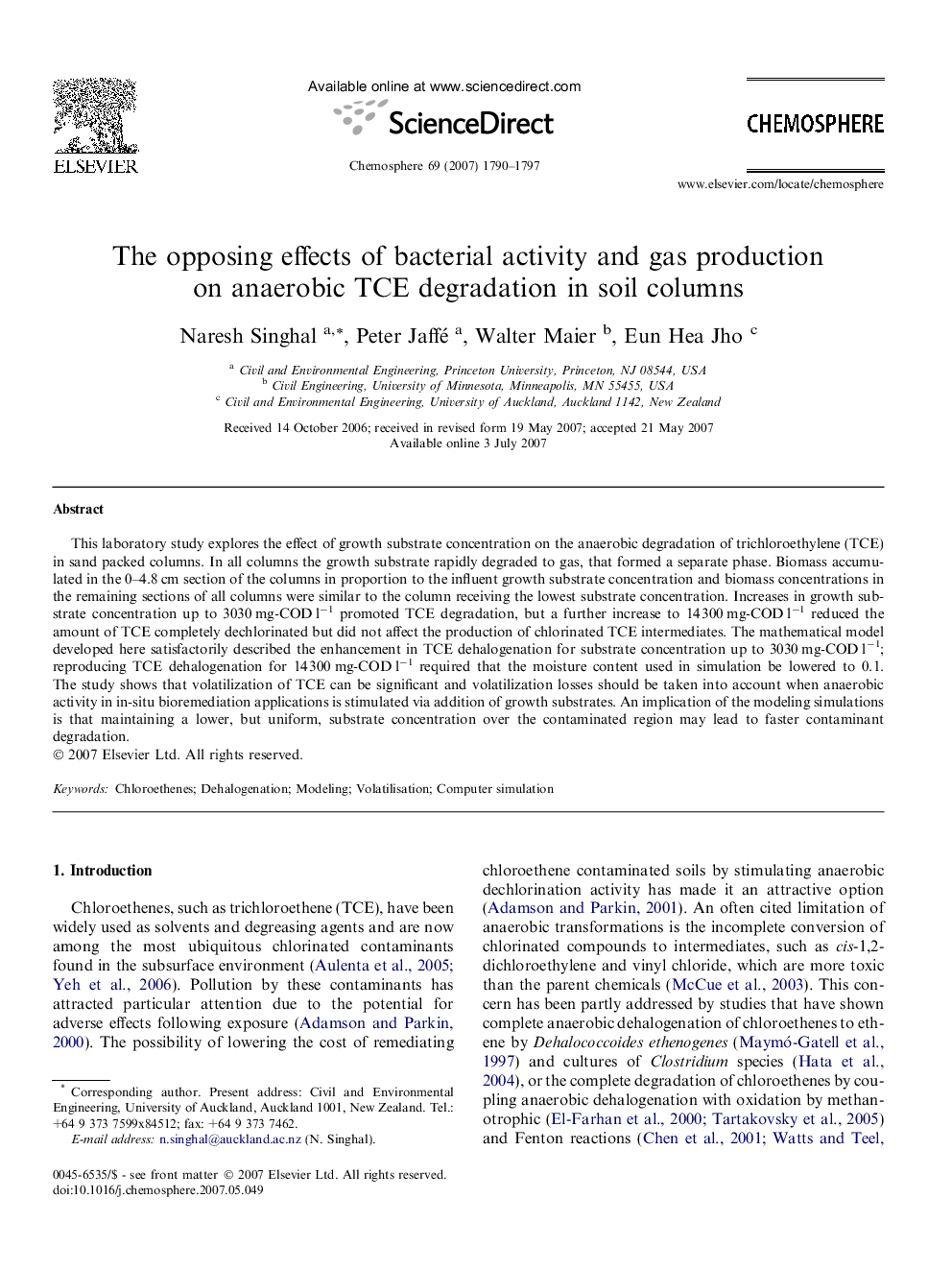| Article ID | Journal | Published Year | Pages | File Type |
|---|---|---|---|---|
| 4414999 | Chemosphere | 2007 | 8 Pages |
This laboratory study explores the effect of growth substrate concentration on the anaerobic degradation of trichloroethylene (TCE) in sand packed columns. In all columns the growth substrate rapidly degraded to gas, that formed a separate phase. Biomass accumulated in the 0–4.8 cm section of the columns in proportion to the influent growth substrate concentration and biomass concentrations in the remaining sections of all columns were similar to the column receiving the lowest substrate concentration. Increases in growth substrate concentration up to 3030 mg-COD l−1 promoted TCE degradation, but a further increase to 14 300 mg-COD l−1 reduced the amount of TCE completely dechlorinated but did not affect the production of chlorinated TCE intermediates. The mathematical model developed here satisfactorily described the enhancement in TCE dehalogenation for substrate concentration up to 3030 mg-COD l−1; reproducing TCE dehalogenation for 14 300 mg-COD l−1 required that the moisture content used in simulation be lowered to 0.1. The study shows that volatilization of TCE can be significant and volatilization losses should be taken into account when anaerobic activity in in-situ bioremediation applications is stimulated via addition of growth substrates. An implication of the modeling simulations is that maintaining a lower, but uniform, substrate concentration over the contaminated region may lead to faster contaminant degradation.
